Key takeaways
- Flipgrid empowers students by providing a digital platform for sharing their thoughts and fostering authentic dialogue, leading to increased engagement and community connection.
- For activist teachers, Flipgrid amplifies marginalized voices and facilitates critical conversations on social justice, promoting empathy and collaborative learning.
- Effective lesson design on Flipgrid includes creating relatable prompts and a supportive environment, allowing students to express themselves freely and authentically.
- Assessment through Flipgrid focuses on the quality of participation and meaningful contributions rather than traditional metrics, enhancing confidence and engagement among students.

Understanding Flipgrid in Education
Flipgrid, at its core, is a platform that turns the traditional classroom on its head by giving every student a voice through short video responses. When I first started using it, I was amazed at how even my most reserved students became eager to share their thoughts. Have you ever noticed how empowering it feels to be heard? Flipgrid captures that feeling in a digital space.
What makes Flipgrid truly impactful is its ability to foster authentic dialogue. Instead of writing essays, students speak directly to their peers, creating a sense of community and connection that’s often missing in online learning. I’ve seen debates spark and perspectives shift—all because a student felt comfortable enough to express themselves freely.
Understanding Flipgrid means seeing it not just as a tech tool but as a catalyst for student engagement and empowerment. It challenges us as educators to rethink how we assess learning and interact with our classes. Isn’t that the kind of change teaching desperately needs?
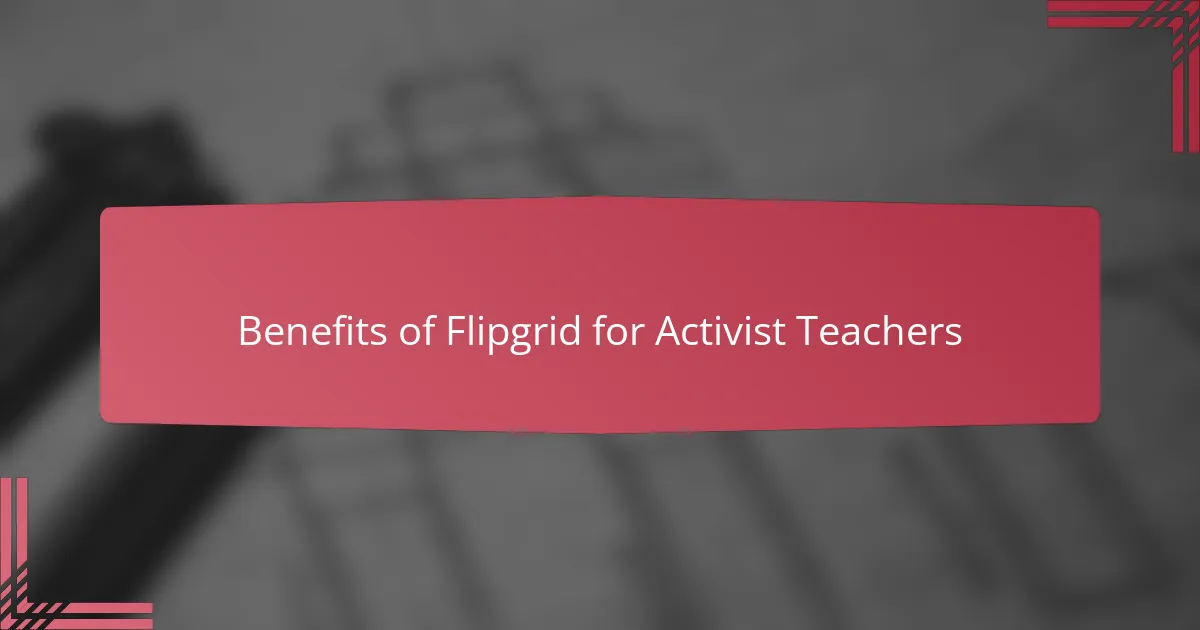
Benefits of Flipgrid for Activist Teachers
For activist teachers like me, Flipgrid is more than just a video platform—it’s a space where marginalized voices can finally break through the noise. When I integrated it, I noticed students who usually stay silent in class were suddenly sharing powerful stories about their communities. Have you experienced the magic when someone finally feels safe enough to speak up? That’s what Flipgrid fosters: courage and visibility.
What really excites me is how Flipgrid supports critical conversations around social justice. I’ve used it to prompt reflections on real-world issues, and it’s incredible to see students challenge each other respectfully and deepen their understanding. This kind of engagement goes beyond memorizing facts—it inspires real empathy and action, which is exactly what activist teaching strives for.
Flipgrid also helps me build a democratic classroom where every student’s opinion matters equally. There’s no hierarchy when everyone gets a stage to speak from home or school. I’ve found this levels the playing field and models the very activism we’re trying to nurture—listening, sharing, and creating change together. Isn’t that what education should always be about?
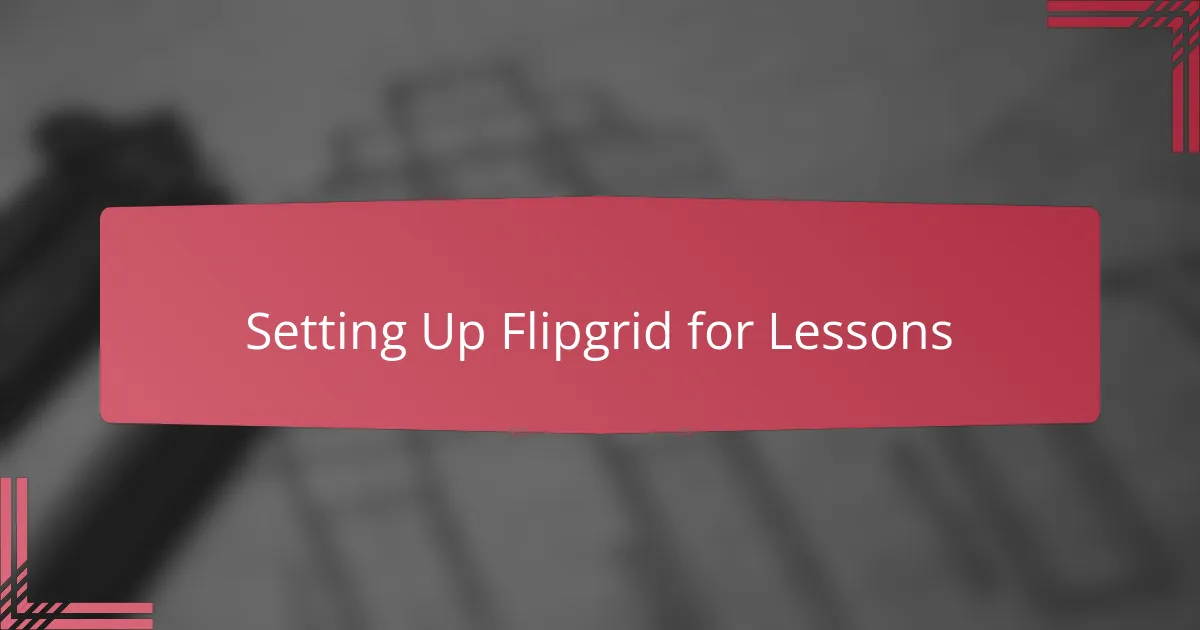
Setting Up Flipgrid for Lessons
Setting up Flipgrid was surprisingly simple, but I quickly realized it wasn’t just about technology—it was about creating an inviting space for my students. I started by crafting thoughtful topics that related directly to their experiences and current events. Have you ever noticed how framing a question just right can spark genuine curiosity? That’s exactly what I aimed for.
I also took time to customize the settings to match my classroom’s needs, whether it was enabling moderation or allowing students to respond to each other. It felt important to me to balance safety with freedom, so students felt both protected and empowered. When you find that sweet spot, participation naturally grows more authentic and heartfelt.
Finally, I shared a quick demo with the class to ease any anxieties about video recording. Watching my students’ eyes light up as they realized this was a judgment-free zone made all the prep worth it. Have you ever seen shy students transform into confident storytellers? Flipgrid gave me that moment again and again.
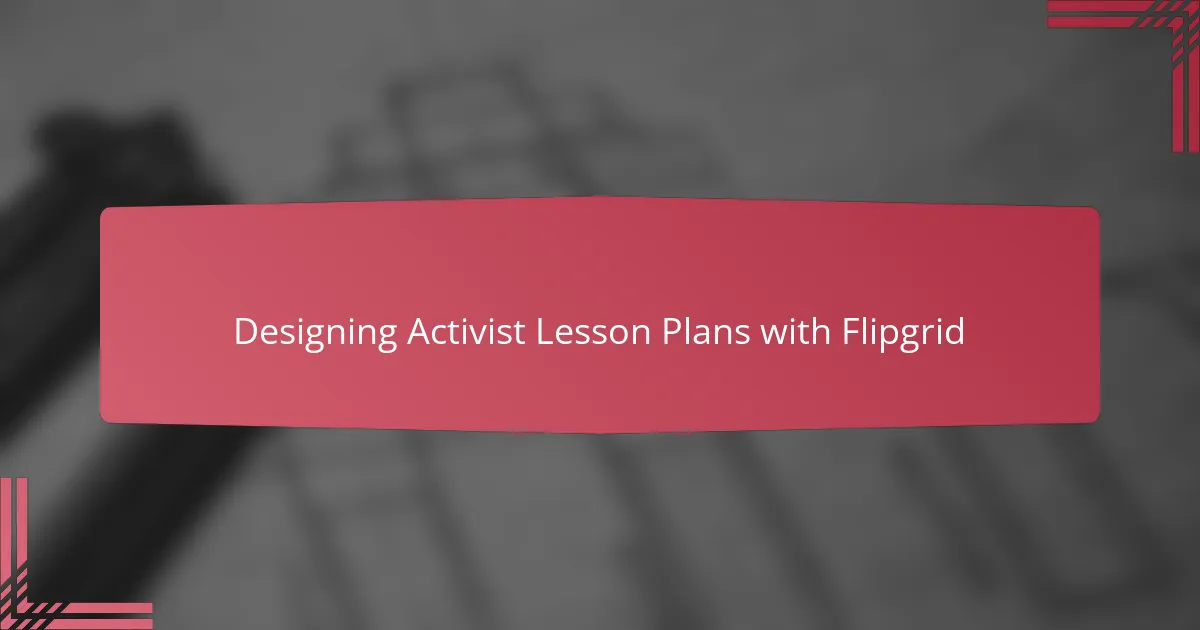
Designing Activist Lesson Plans with Flipgrid
Designing activist lesson plans with Flipgrid means embracing student voices as the heartbeat of social change. I often start by posing open-ended questions that challenge students to reflect on injustice in their own communities. Have you ever noticed how a well-crafted prompt can ignite passionate, personal responses that textbooks simply can’t capture?
In one lesson on environmental justice, I asked my students to share local stories of impact, and the videos revealed concerns I never anticipated—stories that textbooks had overlooked. It was a powerful reminder that when given the platform, students uncover vital issues and take ownership of their learning in ways that feel deeply authentic.
Flipgrid’s video format also lets students express emotion and urgency through their tone and body language, which adds a layer of humanity to activism. I’ve seen hesitant voices turn into calls for action, sparking peer-to-peer inspiration. Isn’t that the transformative learning experience every activist teacher hopes to cultivate?
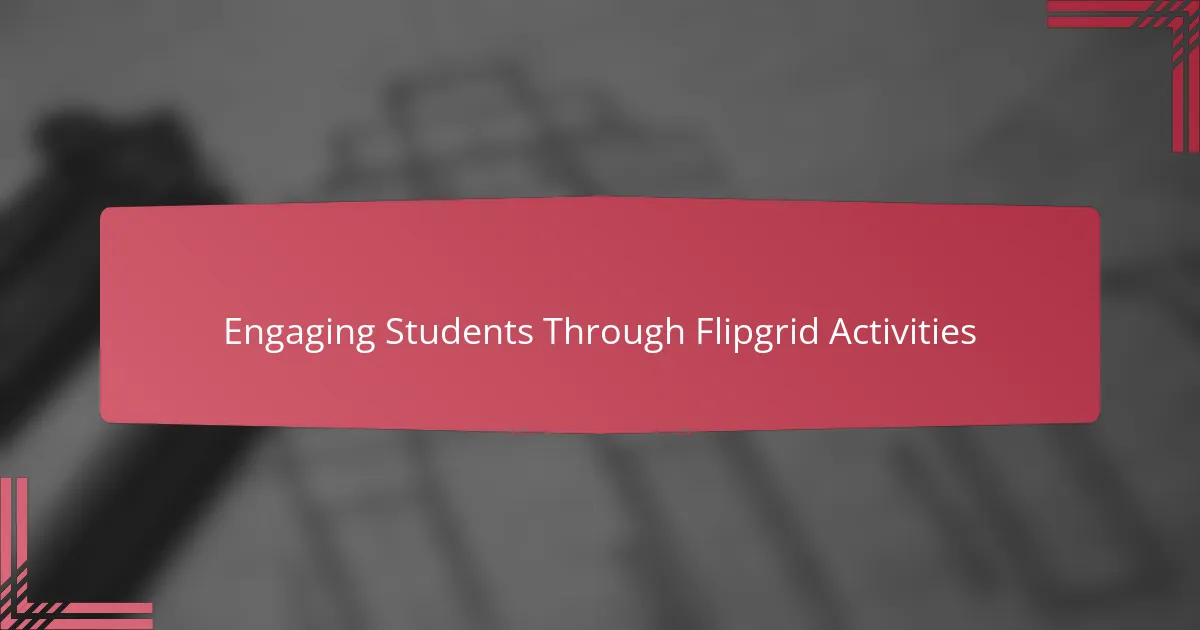
Engaging Students Through Flipgrid Activities
What I love most about using Flipgrid is how it turns engagement into something lively and personal. Instead of waiting for the usual hand raise, students dive into creating video responses that showcase their unique perspectives. Have you ever noticed how seeing a peer’s enthusiasm on screen can nudge even the quietest students to join in?
Sometimes, I assign prompts that invite creativity—like sharing a personal story or a community challenge—which transforms learning into storytelling. I’ve witnessed students light up when they realize their voices matter and that their experiences resonate with others. Isn’t that the kind of engagement that makes lessons stick?
Responding to each other’s videos adds another dynamic layer. It’s not just about speaking; it’s about listening, reflecting, and building dialogue. When students comment on their classmates’ ideas, I see genuine connections form, turning individual tasks into collaborative movements. Doesn’t that feel like the heart of activism in the classroom?
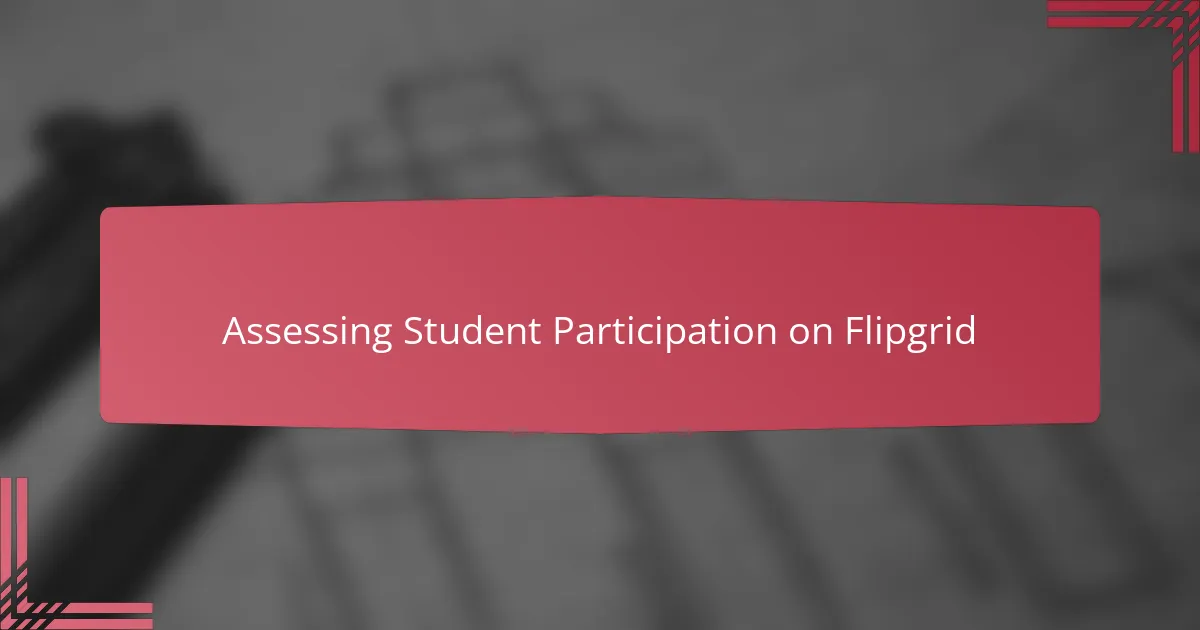
Assessing Student Participation on Flipgrid
Assessing student participation on Flipgrid is a bit different from traditional methods, and that’s what I find most refreshing. Instead of just ticking a box for attendance or counting written assignments, I watch how students express themselves through their videos—their tone, enthusiasm, and reflections tell me so much more about their engagement. Have you ever realized how much richer your understanding becomes when you see and hear students rather than just read their words?
What really stands out to me is the way Flipgrid allows for varied forms of participation. Some students shine by sharing deep personal connections, while others engage through thoughtful responses to their peers. I keep a close eye on these interactions because they reveal who’s truly involved in the dialogue I’m cultivating. Isn’t it fascinating that assessment can be about quality and connection rather than quantity alone?
To keep track, I’ve developed rubrics that focus on criteria such as clarity of expression, respectfulness in replies, and critical thinking. It’s not about perfect speeches but about genuine effort and meaningful contribution. Through this process, I’ve seen students grow more confident and committed, and that growth is the kind of assessment data that feels truly valuable. Have you noticed how fostering a supportive space encourages students to take risks and show up as their authentic selves?